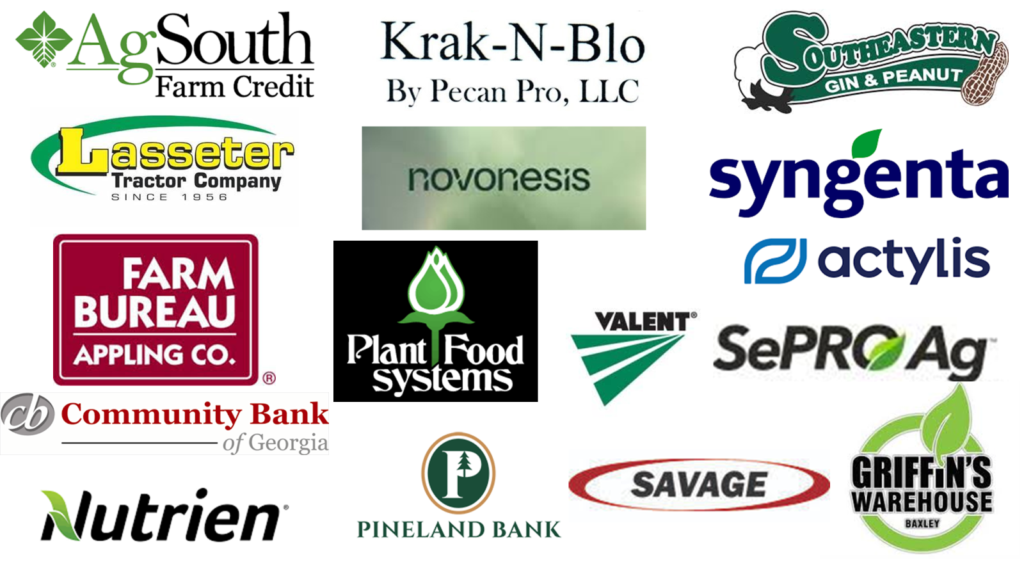Reminder on Upcoming Meetings
- Appling County Cotton Meeting: February 10, 2025 @ 8:00 am at the Appling Ag Center. Call 912-367-8130 to RSVP in order to plan for meal.
- Georgia Corn Short Course: February 12, 2025 @ 8:00 am – 3:15 pm at the UGA Tifton Campus Conference Center. Registration is Required.
- Georgia Conservation Tillage Alliance Meeting: February 18, 2025 1-5 pm – February 19, 2025 8:30- Noon at the Georgia Museum of Agriculture in Tifton, GA. Registration is Required.
- Appling County Row Crop Weed Management Meeting: February 20, 2025 @ 8:00 am at the Appling Ag Center. Call 912-367-8130 to RSVP in order to plan for meal.
————————————————————————————————————–
Recap of Appling County Pecan Meeting
We had a good crowd at this years Pecan Meeting. We would like to send a thank you out to our sponsors and to our speakers. See below main points from each speakers presentation at last weeks meeting.


Main Points from Dr. Lenny Wells, UGA Pecan Specialist
Hurricane Helene
- Expect a very light crop load this year, historically crop load is very light the year following a major storm then heavy 2 years later.
- Manage your orchard less intensely this year due to expected light crop load.
- Minimize Nitrogen: 50 lbs/A MAX, Monitor K,P,Zn
- Cut back on water: No need for more than 50-60% full capacity with no crop load.
- Introduce hurricane resistance:
- Of course, nothing really can help against >90 mph wind.
- Reduce fertility at young age to encourage root growth.
Balanced Granular Fertilizer lbs/tree (10-10-10, etc.)

N Injection via irrigation lbs/A (28%, etc.)

- Encourage roots of young trees to search for water
Irrigation Recommendations on Young Trees (<4 yrs) (14.7 gph emitter)

With 1” rain turn off irrigation for 3 days
- Maintain a good crown to root ratio

Hedging
- For production, hedging works best on prolific varieties that fruit on interior of canopy. ( Creek, Caddo, Sumner, Cape Fear, Pawnee )
- Hedge every other middle every 4th year or every 4th row on 4 year cycle. (Dormant or Summer; Except Cape Fear, Byrd, Pawnee: Hedge Dormant)
- Make cuts 6-7’ out from trunk, top at row width or 40’ max.
- Row width <30’ would need to start hedging about year 6.
- Hedge North to South. If you have really tight spacing, some years will need to go E to W.
Fertilizing and Irrigating Mature Trees
- Apply 50-100 lbs/A; no more than 25 lbs/injection.
- Recent studies have shown pecan water use in April-Mid May to be lower than originally thought, this has lead to a change in UGA irrigation recommendations for mature pecan trees. See the graph below for the updated recommendation. (Only 2 changes: April: recommendation reduced by 65%, Early May: recommendation reduced by 50%).

Recommended Varieties
- Interplanting: Avalon, Creek, Excel, Sumner, Zinner
- New Orchard: Avalon, Creek, Lakota, Excel, Caddo
Mr. Adrew Sawyer, UGA Pecan Agent, spoke on a recent trial conducted with Pre-Emergent Herbicides. If you are interested in implementing pre-emergent herbicides into your pecan weed management program, call your local county extension office for this information.
——————————————————————————————————————
Main Points from Dr. Tim Brenneman, UGA Plant Pathologist
Pecan Root Knot Nematode
- Surveys have shown the Pecan RKN is all over Georgia, worst in sandy soils, and damage is most severe on young trees,
- To determine if you have Pecan RKN, sendoff soil sample or dig up roots and look for damage. Damage is seen as galling on roots and little to no feeder roots.
- There are no resistant rootstocks, but some nematicides, best used at replanting in infested fields.
- Nematicide Options
- Fumigants (custom applied)
- Must be applied in fall before planting.
- Velum (6.8 fl. Oz./A)
- Add velum to transplant water or flood in soon after planting.
- Salibro is labeled on non-bearing trees.
- Fumigants (custom applied)
Bacterial Leaf Scorch (Xylella)
- Most cultivars appear to resist severe symptoms
- Highly susceptible cv. Like Byrd or Cape Fear can be devastated, and hedging sometimes appears to make it develop much faster.
Smart Sprayers
- Had 3 On-farm Trials in 2024. Gave same scab control w/ 22-45% less spray then conventional.
- Can save time and money, especially in an orchard with gaps and mixed tree sizes.
——————————————————————————————————————
Main Points from Dr. Apurba Barman, UGA Fruit/Nut Trees Entomologist
Ambrosia Beetles
- Young trees are most vulnerable, trees can recover, but more attacks could kill young trees.
- Signs include white “toothpick” structure coming out of tree.
- Prefer stressed trees (ethanol)
- Trapping/Monitoring
- Drill hole in the middle of a bolt of woods.
- Pour ethanol into the hole and plug the hole.
- Deploy traps along woodlines next to orchards by early February
- Look for sawdust toothpicks
- Once you find toothpicks make a pyrethroid application on tree trunks up to 3-4 feet at 7-10 day intervals (Feb – April). Can Also be mixed in paint and painted onto trunk of tree.
Phylloxera
- “Knots” on leaf or stem.
- Can cause early leaf drop, which affects nut size and production.
- Apply imidacloprid right after bud break.
Pecan Nut Casebearer
- Eggs are laid in mid-May, monitor for adult emergence, timing is critical to target the immature.
- Treat with Intrepid or Intrepid Edge 1-14 days following first capture.
- County Agents monitor PNC for BioFix program. Use this link to monitor PNC in your county. https://pecan.agpestmonitor.org/ipmtoolbox/forecast/
Black Pecan Aphid
- Early population does not establish well, ignore in May or June.
- Causes leaf yellowing, leads to premature leaf fall.
- Focus on control beginning in July.
- Apply imidacloprid via drip in early/Mid July.
- Apply Pro Gibb 3 times, every 10 days, starting Mid-July.
- Treatment options: Transform, Carbine, Safine, PQZ, Nexter (also controls mites)
- ROTATE Chemistries
Pecan Leaf Scorch Mite
- Mostly seen around Agust/September
- Treatment options: Abamectin, Acramite, Envidor, Nexter, Magister, Portal